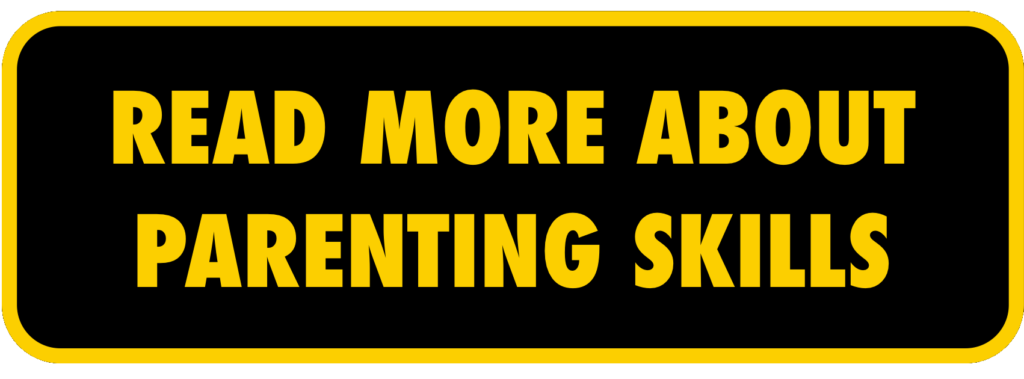Discipline vs. Punishment
Good behavior is a learning process for children; parents serve as children’s roadmap to a healthy, happy adulthood. Similarly, parenting is also a learning process! We know that children’s behavior is generally a direct reflection of their immediate emotions and impulses, but parents and role models also rely on emotions and impulses to teach.
Sometimes, acting directly on our emotions and impulses can mean that we revert directly to punishment when a child misbehaves, and thus missing a valuable opportunity to teach them life skills.
In this article, we will explain the difference between discipline and punishment, and we will also provide some advice on how you can teach good behavior through healthy discipline with your child.
Discipline VS. Punishment
Let’s compare these two words and what they really mean:
Punishment (n): The infliction of a penalty as retribution for an offense.
Discipline (n) The practice of teaching people to follow a code of behavior or ethical system.
Sometimes people conflate the two words. This is likely because some people use punishment as their sole means of teaching good behavior. This is called Classical Conditioning, and in some cases it works! However, humans have incredibly complex brains, and not every child learns the same way. Some children don’t respond well to punishment AT ALL! (I’ve met my fair share!) Other children might respond to punishment from their teachers, but not from their parents, or vice versa. And riskiest of all – some children may respond very well to discipline in terms of changing their actions, but they may not learn the underlying ethical lesson. These are the children who can grow up to be violent or abusive, because in their minds the only way to change someone’s unpleasant behavior is to continue increasing the level of punishment until the individual complies.
Clearly, incorporating the lesson is imperative in all forms of discipline, including when punishment is included as a tool in the discipline toolbox.
Mindfully Responding to Poor Behavior
It’s understandable that parents can get very frustrated when a child misbehaves, specifically when they make the same poor behavior choices over and over. At the same time, if we have clear goals to teach good behavior skills, then we can respond better. The better we can mindfully respond, the better the results will be!
One way to help yourself to be mindful in your responses is to keep your goals for your child in mind when they misbehave. Here are two goals that are often present during challenging parenting situations:
- Following Directions – This is usually our immediate goal. We would like them to listen to us and follow directions with minimal fuss and time wasted.
- Good Habits & Independent Decision Making – This is more of a long-term goal. We want children to make better choices without the need for constant intervention by us.
In order to reach these goals, we first need to consider both as often as possible. Write down your main goals that you have for your children on a post-it, both the immediate goal and the more long-term goal, and then stick it somewhere like your bathroom mirror where you can see it often as a reminder to yourself to keep your main goals in mind. Make sure you write it large enough that you can see it! This way, you are more likely to remember your goals in the moment that it counts, and you’ll be better prepared to be patient, present, and intentional with your discipline.
Benefits of Discipline
- Taking the time to teach your child a life skill as part of your behavior management strategy helps your child to develop self-discipline skills, such as managing emotions & impulses.
- The self-discipline that children learn from healthy discipline during childhood leads to higher levels of life satisfaction.
- When you discipline children in a healthy way, you instill trust and self-confidence in your child.
- Discipline provides a foundation for understanding consequences.
- Discipline leads to greater self-control, which leads to children having an increased ability to set and achieve goals.
- Adults who experienced consistent, healthy discipline during childhood are more likely to be healthier and earn more money.
3 Steps to Healthy Discipline
1. CONNECT
The first thing that any adult must do in these situations is to remain calm and CONNECT with the child. This doesn’t mean to be permissible or passive, but rather to ensure that, as you begin to set clear expectations, your child calms down emotionally and feels your loving & caring approach. Children are extremely perceptive and sensitive to your energy and emotions. If you are stressed, frustrated, or angry, your child will likely take on that energy him or herself. And as we all know, when children are upset, they are less likely to hear what you are saying. You must be patient so that you remain as calm as possible during the process. This can definitely be tough, but it is without a doubt the most effective way to discipline children.
2. REVIEW
Review in a calm, objective way what the poor behavior choice was and why it was not a good option. Next, review what the proper behavior choice was and why it was a better choice. When you are discussing this, get down on the child’s physical level if you can by kneeling or sitting across from him/her. Try to maintain eye contact or other connections, such as holding their hands or putting your arm around them. This way your child will be able to feel your unconditional love, and they will be better able to listen and learn from what you are telling them.
3. REPAIR
Lastly, discuss the necessary steps for repairing the current behavior problems and any damage the problems may have caused. Ask your child what s/he would like to do differently next time, and discuss what consequences would be appropriate if the poor behavior continues. Ask your child what s/he would like to do to repair any damage done by their misbehavior, such as hurt feelings or lost time. Perhaps an apology, or perhaps an offer to make it up to the hurt party in some way would be a good option to repair the damage. This requires you to be intentional and firm in your actions so that your long-term goals start to take shape.
TL;DR
Discipline that involves teaching is a healthier and more effective method for instilling long-term positive behavior skills.
Consistent, positive discipline during childhood leads to adults with healthy self-discipline habits, which leads to greater happiness in life.
Connect, Review, and Repair is the 3-step method for developing self-discipline skills.
We hope this article sheds some positive light on how to help your child make better behavior choices! Be sure to check back soon to read our next blog post on choosing healthy, appropriate consequences.
Source: SKILLZ


Comments are closed.